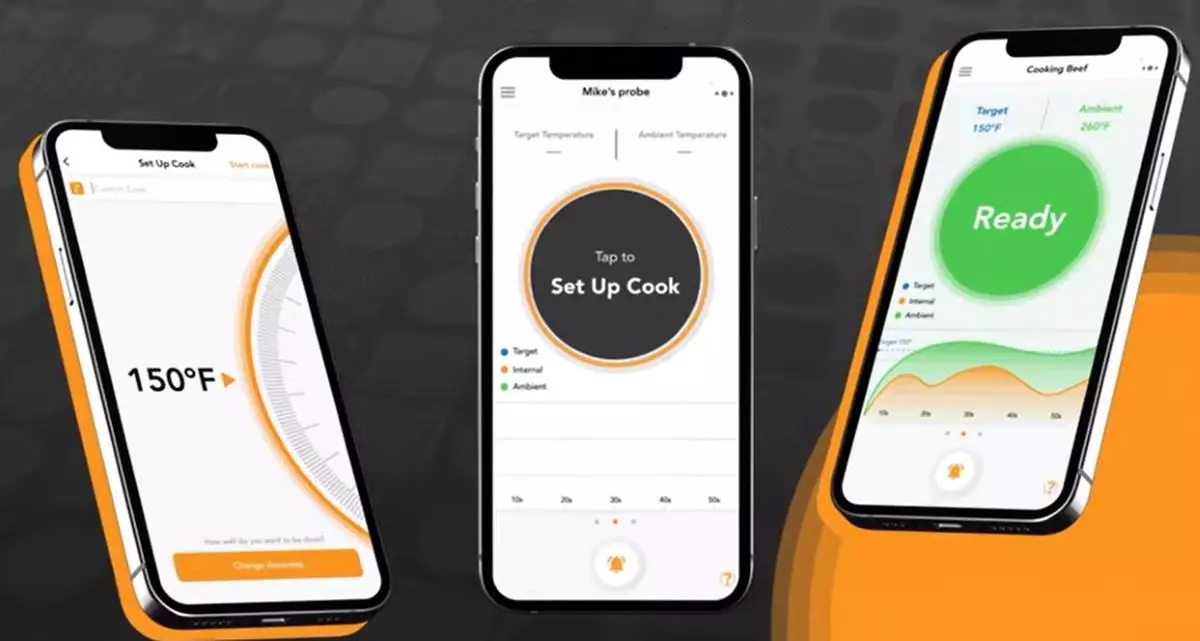
How to Calibrate a Meat Thermometer
Here we pride ourselves on helping you cook meat at the perfect temp every time. To make sure you get that perfect temp, it is important to test the accuracy of your thermometer from time to time. The easiest way to test the accuracy of any thermometer is in a properly made ice bath. If you do this carefully, your ice bath will be 32.0°F within ±0.1°F. If you are not careful, the ice bath can be off by several whole degrees. (Just a cup with ice water in it can be 12 or more degrees too high.)
Fill with ice
The key to making a proper ice bath is getting the proper ice-to-water ratio. Fill a large mug or container all the way to the top with ice. Crushed ice is preferred because there are fewer gaps between the ice, however cubed ice will also work.

Add Water
Slowly add cool water to fill the spaces between the ice. Fill about 1/2″ below the top of the ice. Let the mixture sit for a minute or two to allow the temperature of the water to settle. If you notice the ice starting to float off the bottom of the mug, pour off some water and add more ice. Water below the ice will not be at 32°F.
Insert the Probe
Once the mixture has rested for a minute or two, insert your probe (or thermometer stem) into the mixture and stir in the vertical center of the ice slurry. By stirring the probe, you keep the sensor from resting against an ice cube, which will affect your reading. Keep the probe tip away from the sidewalls and don’t allow it to rest against the bottom of the mug. Doing so will give you inaccurate temperature readings. If the thermometer has an extremely fast and sensitive needle tip, you must gently stir the probe or you will find colder and warmer spots in the ice bath. Stirring equilibrates the temperature throughout the vessel.
Confirm Calibration
Your thermometer should read 32°F (0°C) in the ice bath. Adjust your ChefsTemp thermometer according to the instruction manual provided; however, before you attempt to adjust it, check that the readings are within our accuracy specifications.
Finaltouch X10 Accuracy: ±0.7°F (±0.4°C) from -22 to 392°F , (-30.0 to 199.9°C) otherwise ±1.8°F (±1.0°C).
If it’s within the specified tolerance, don’t adjust.
Remember to keep track of your calibrations to monitor the performance of the thermometer. Misuse can cause the instrument to fall out of spec more often, so be sure to keep the thermometer in good condition.
For a visual of how to make an ice bath correctly, check out the video below.
https://youtu.be/rr7BalzlUsA
For a visual of how to calibrate a meat thermometer, check out the video below.

Can You Use a Meat Thermometer for Water?
Meat thermometers can be used to measure the temperature of anything that fits within it’s designed temperature range. From water to heated cooking oil. To find out what you can measure, it is important to look up the specifications and specifically the temperature range for your meat thermometer. The ChefsTemp Final Touch X10 has a temperature range of -22℉ to 572℉(-30℃ to 300℃) and can measure temperatures for any kind of food from boiling water to frying oil.

Finaltouch X10
The Finaltouch X10 thermometer from ChefsTemp gives an accurate reading not only for the inside of food but for surface temperatures as well. The diversity of the thermometer’s usage is second to none compared to other thermometers. By getting a reading within 1 second, the Finaltouch X10 from ChefsTemp is prepared to take on any task it is given.
3 Comments
Comments are closed.
Discover Other ChefsTemp Products
Discover more recipes and learn kitchen tricks by joining our cooking family on Facebook.
You may also like:













[…] are two methods for testing the accuracy of your thermometer: The Ice Bath Calibration Test and the Boiling Point Calibration […]
[…] as needed, to ensure you get an accurate reading. You can calibrate your thermometer in Ice Bath or Boiling Point of […]
[…] accordingly: The Ice Bath Calibration Test and the Boiling Point Calibration Test. Click here to find out how you can calibrate your thermometer in an Ice Bath or keep reading to discover how […]